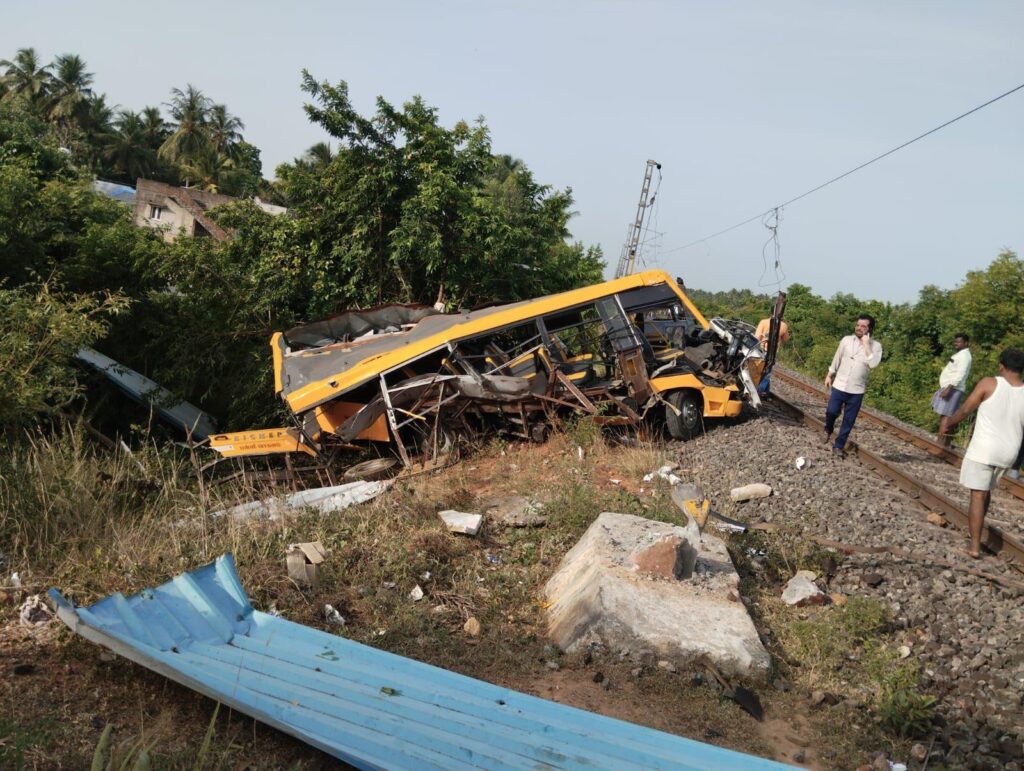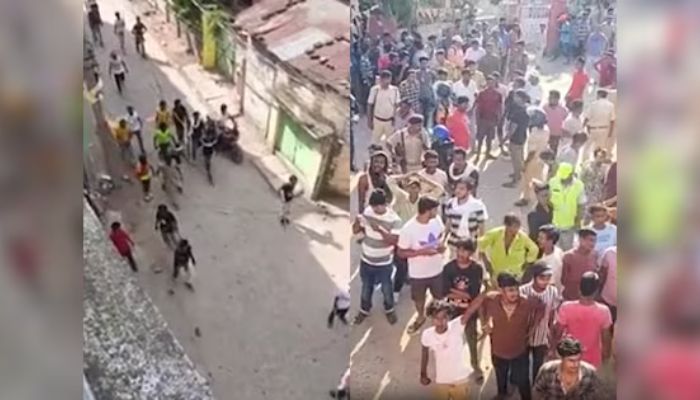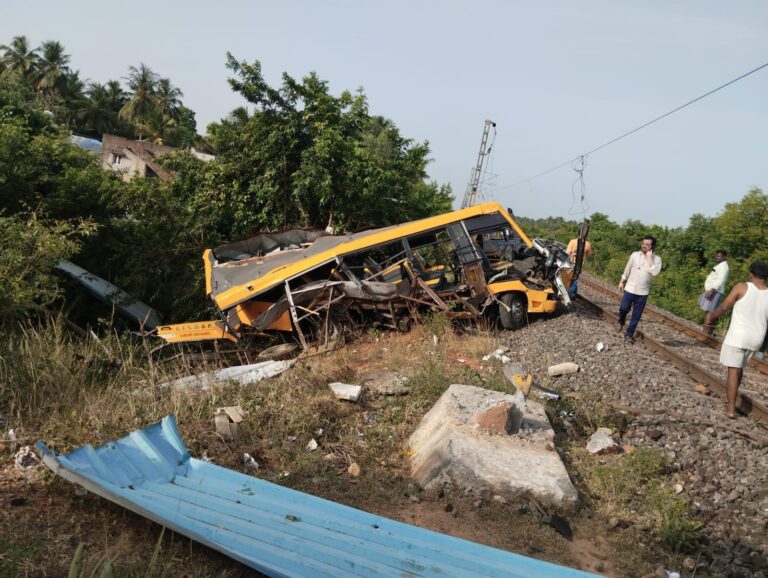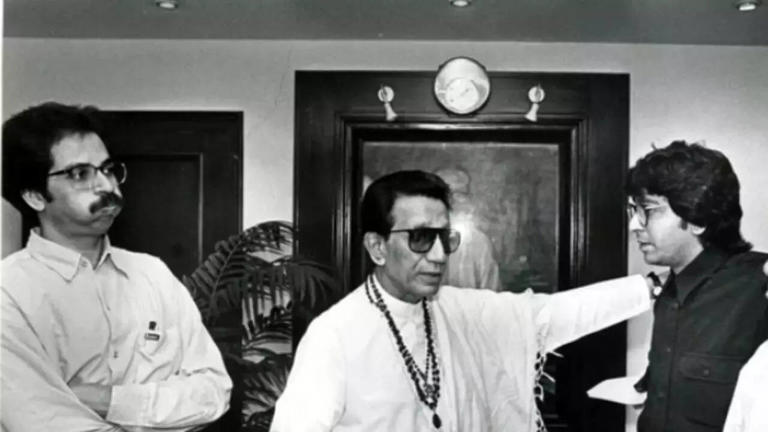Semmankuppam Horror Exposes India’s Outdated and Deadly Rail Crossings.
In a fatal collision on July 8, 2025 between a School bus and a Train at Semmankuppam in Tamil Nadu where this Devastating accident claimed the lives of at least two children and left many critically injured. This incident had occurred when a school van tried to cross the tracksーa non-interlocked manned railway gate and was hit by Villupuram–Mayiladuthurai passenger train. This Accident had brought renewed attention to not only for a better Railway infrastructure but also about better safety protocols across India that can prevent such catastrophe.
The railway crossing in focus is a non-interlocked manned railway gate which has been identified as high-risk points in India’s rail safety landscape. This Point relies heavily on manual coordination between the station master and Gatekeeper. And in a moment of error this havoc occurred which dragged the van with vulnerable children in it to at least 50 meters after the impact. This fatal event had reopened debates but what is more concerning is these interlocked manual gates still blot the railway network across India.
#Schoolbusaccident : #Tamilnadu
— Surya Reddy (@jsuryareddy) July 8, 2025
A School Bus Crossing a Railway Track was Hit by a #Train at #Semmankuppam near #Cuddalore, 2 Children Dead and 4 injured (#TrainAccident).
Horrific, at least 2 #Students were killed and 3 others sustained serious injuries after a #SchoolBus… pic.twitter.com/pvi0NUejhO
What We Know About the Semmankuppam Tragedy
According to preliminary findings, negligence in following safety procedures may have played a critical role. The gatekeeper was suspended shortly after the incident, suggesting a failure to receive or act on instructions to close the gate in time. Whether the communication was delayed, missed, or ignored remains under investigation. Eyewitnesses recounted that the driver, possibly unaware of the approaching train, attempted to cross the track, only to be hit moments later.
The preliminary findings had also pointed out negligence in the Safety procedures. According to the findings, the gatekeeper, suspended shortly after the incident, had failed to either act on instructions or didn’t receive clear cut instruction to Close the gate on time or completely ignored the protocols that are privy to the investigation.
The Children, The Victims of this accident were students of a nearby Private school and when their Journey ended in an early grave this shook the whole of Tamil Nadu. Local authorities and Emergency Services responded with war footing swiftness but no amount of response can reverse this immeasurable trauma for those parents who lost their Children. This mishap is a stark reminder of vulnerabilities linked to outdated infrastructure and time-consuming processes.
This type of Tragedy is not an Isolated incident but a part of a larger plaguing problem of India’s Railway network. In rural and Semi-urban areas, one can still commonly observe these non-interlocked gates representing critical failure points where a small human error can factor for cataclysmic affairs. Albeit the matter of modernising the Railway infrastructure is a concurrent process where to mitigate these safety hazards and eliminating existing risks in any capacity is believed to be of high urgency, and hopefully tragedies like the one at Semmankuppam show the urgency of addressing these loopholes with a rapid pace.
The Semmankuppam train collision is a tragic wake-up call. It reflects the systemic risks posed by outdated gate systems, insufficient driver training, and protocol violations. Tamil Nadu—and India as a whole—must urgently upgrade rail crossing safety infrastructure, enforce training programs for school transport operators, and ensure stricter monitoring of manned gate procedures to prevent another avoidable tragedy.




















